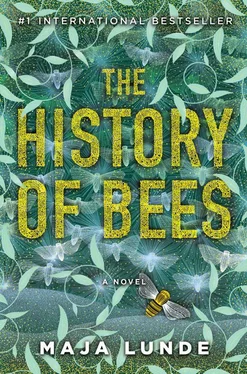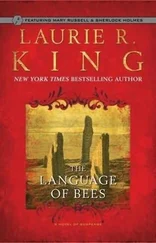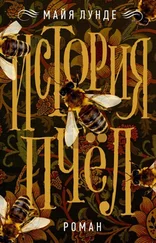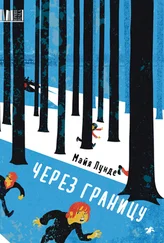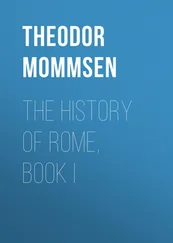But it had started long before that. I found a video about the development of beekeeping throughout the past century. After the Second World War, apiculture was a worldwide, flourishing economy. In the US alone there were 5.9 million colonies. But the figures dropped, both there and in the rest of the world. In 1988 the number of hives had been halved. Bee death had afflicted many places, in Sichuan as early as in the 1980s. But only when it struck in the US—and as dramatically as it did precisely in 2006 and 2007, farmers with several thousand hives suffered mass disappearances in the course of a few weeks—only then did The Collapse receive a name. Perhaps because it happened in the US, nothing was really important at that time until it happened in the US: mass death in China didn’t merit a worldwide diagnosis. That’s how it was back then. Later everything was turned around.
A good number of books were written about CCD. I leafed through them, but found no straightforward answer. Nobody agreed about the cause of The Collapse, because there was no one specific cause. There were many. Poisonous insecticides were the first thing considered. In Europe certain forms of pesticides were temporarily banned in 2013 and with time, also in the rest of the world. Only the US held back. Some scientists maintained that the poisons had an impact on the bees’ internal navigation system and prevented them from finding their way back to the hive. The toxins affected the nervous systems of small insects and many people were adamant in their belief that several of the causes of bee death stemmed from these toxins. The ban stemmed from a better-safe-than-sorry principle, it was said. But the research findings weren’t conclusive enough. The consequences of banning the toxins were too great. Entire crops were destroyed by vermin, with subsequent food shortages. It was impossible to carry out modern agriculture without the pesticides. And the overall impact of the ban was too negligible; the bees disappeared all the same. In 2014 it was established that Europe had lost 7 billion bees. Because the poison was in the soil, some claimed, the bees died because it still affected them. But there were few who listened. After a trial period the ban was lifted.
Not only pesticides were to blame. Varroa destructor —a tiny parasite that attacked the bees—was also a cause. The parasitic mite attached itself to the body of the bee like a large ball, sucked the hemolymph out of it and spread a virus which was often not detected until much later.
Then there was the extreme weather. The world gradually acquired a new climate. Starting in the year 2000 and onwards, it evolved faster and faster. Dry, hot summers without flowers and nectar killed the bees. Hard winters killed the bees. And rain. The bees stayed inside when it rained, like people. Wet summers meant slow death.
Single-crop agriculture was a third factor. For the bees, the world was a green desert: mile after mile of fields where the same plant was cultivated, along with a lack of uncultivated areas. Man’s development took off, the bees didn’t keep up. And they disappeared.
Without bees thousands of acres of cultivated fields suddenly lay fallow. Flowering fields without berries, trees without fruit. Suddenly farm produce which formerly had been everyday food became scarce: apples, almonds, oranges, onions, broccoli, carrots, blueberries, nuts and coffee beans.
Meat production declined over the course of the 2030s, in that it was no longer possible to produce some of the formerly most important types of feed for domestic animals. Human beings likewise had to do without milk and cheese, because the animals no longer produced enough. And the production of biofuel, such as sunflower oil, which had been invested in heavily as an oil substitute, was suddenly out of the question, because it was dependent upon pollination. Once again there was a return to nonrenewable energy, which in turn accelerated global warming.
At the same time, population growth stagnated. First it stopped, and then the curve began to descend. For the first time in the history of mankind, the human population was no longer on the increase. Our species was in decline.
The disappearance of the bees affected the continents differently. American agriculture was the first in crisis. The Americans couldn’t manage, like the Chinese, to pollinate by hand. They didn’t have the workforce. People wouldn’t work cheaply enough, long enough, hard enough. An imported labor supply didn’t solve the problem, either. The workers also had to be fed, and although they were hardworking and persevering, the food they produced was not much more than what they consumed themselves.
The collapse in the US led to a worldwide food crisis. Simultaneously, the bees died in Europe and Asia, too.
Australia was the last nation to be affected. A documentary from 2028 explained how. Australia had been everyone’s hope, here the Varroa destructor mite was still not found, here it seemed as if the bees didn’t react to the contaminants to the same extent as elsewhere. Healthy bees came from Australia and with time apiculture grew into a large economy. Australia also developed into a leading research nation for bees, pollination and apiculture.
Nobody knew how it happened, but on a spring day in 2027 a beekeeper in Avon Valley noticed that there were defects in one of his hives. Mark Arkadieff ran an organic honey farm. He did everything right. Pollination on a small scale, only a small number of hives were ever moved at a time, gently and carefully, and only to farms that could guarantee that they didn’t use pesticides. He took good care of his bees, changed the bottom boards when they were dirty, ensured that they always had enough to eat. Arkadieff himself said that the bees owned him, not the other way around. He was their humble servant, they controlled his life, his annual rhythm, when he got up and when he went to bed. He had proposed to his wife, Iris, while they were carefully trying to lead a swarming bee colony to a new hive.
That Arkadieff’s farm, Happy Bees Honey Farm, would be the first place on the Australian continent to be affected by mites was a fate they didn’t deserve. Presumably it was the sister’s fault. She lived in California, and had recently spent two weeks on the farm. She must have carried the infection with her in her luggage. Or it could have been the work clothes they had ordered from South Korea. Nobody noticed anything when they opened the innocent-looking, gray-paper package and took out sensible overalls for use on the farm. Or could there have been something in the fertilizer the neighboring farm had just had delivered, large sacks of it, produced in Norway?
Mark didn’t know, his wife didn’t know. All they knew was that that spring their bees became ill, and they didn’t discover it until it was too late.
He showed the news team around the farm while he told his story. He couldn’t hide the tears when he opened empty hives, with just a few dying bees on the bottom. Now there were no longer any safe countries. The world was facing the greatest challenge in the history of the human race. A final all-out effort was made. The Varroa destructor mite was fought off to a degree. In some places attempts were made to diversify single-crop farming. Flower borders were planted between the fields. Pesticides were once again banned. But because of this ban, entire crops were eaten by vermin.
English scientists had experimented with the creation of genetically modified plants, plants that carried the pests’ own pheromone, (E)-betafarnesene, a substance the insects secreted to signal to others that there was danger nearby. Now these genetically modified plants were used to a far-reaching extent. China was the first to implement this new standard, in desperation because of the food shortage. The pheromones wouldn’t affect the bees, it was said, they wouldn’t notice. The environmentalists protested loudly, held that the bees would react to the pheromones in the same way as the insect pests. But they weren’t heard. It was a win-win situation, it was claimed. People could continue with their industrial farming—nobody knew of anything else—the bees would be spared the nerve poison in the pesticides.
Читать дальше
